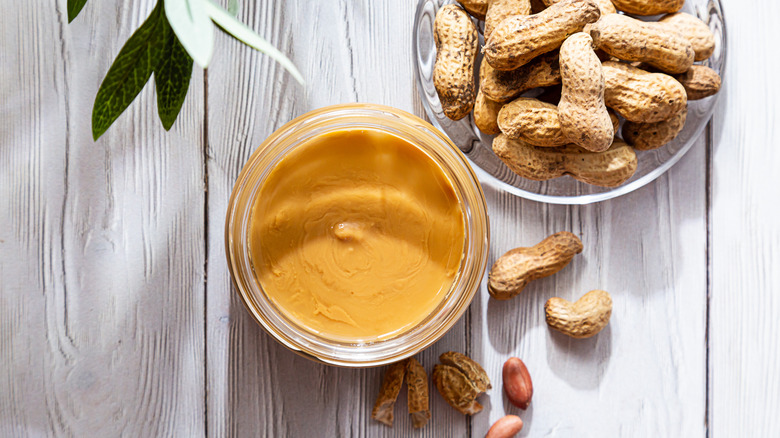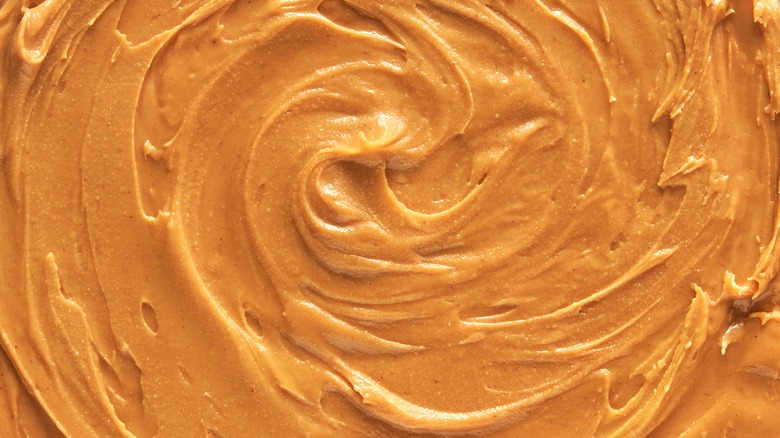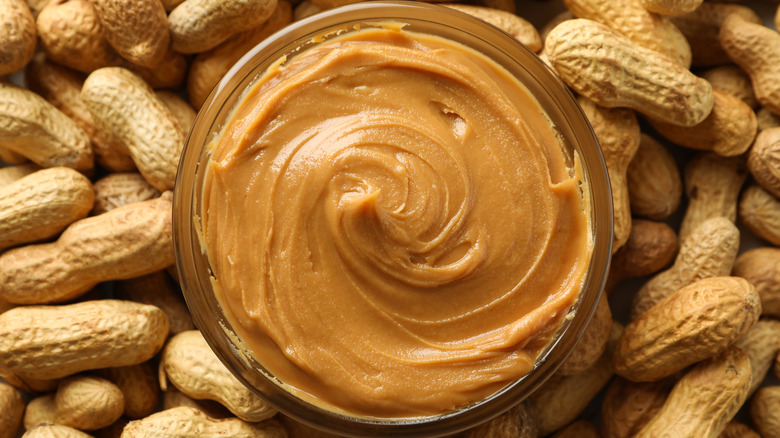For The Creamiest Homemade Peanut Butter, Patience Is Key
Whereas the British have vegemite for smearing on toast, piling into sandwiches, or enjoying on crackers, Americans have peanut butter. Now, while most people tend to get their hands on it by picking up their favorite brand from the supermarket, you can actually make this pantry staple at home.
Making homemade peanut butter avoids any additives that may be mixed into store-bought varieties and also gives you a better-tasting, more flavorful spread. Plus, it's extremely simple — all you have to do is chuck the nuts in a food processor and beat them until they're smooth.
However, while making peanut butter yourself does have its benefits, it also comes with its caveats; namely, when you make it yourself, it can be hard to get the same smooth, creamy consistency you'd find in store-bought versions. To get around this issue, many people simply add generous helpings of oil to their peanut butter to help it blend up smoothly. The reality is, however, that a better choice may be to just wait things out in order to get a smoother, creamier spread that tastes great.
Why patience is the best move
When making peanut butter, it's definitely easy to get discouraged when you process your nuts and don't see them forming a smooth spread right away. However, when you start adding oil to your mixture, the trouble is that if you're too heavy-handed, you can't take it back out of the mixture. What that means is that it's all too easy to accidentally pour in too much.
Now, peanuts actually have natural oils, which they release as you pulverize them in your kitchen machine. So, as long as you're patient, you should actually be able to create a smooth nut butter without mixing in any additional oil.
If you've already waited for several minutes and still find that your spread hasn't gotten to the creamy consistency you're looking for, you can add a dash of oil and restart the food processor. However, make sure that you do this in very small amounts. A little can go a long way, and if you go slowly and wait things out, you can ensure you don't accidentally mix too much oil in right away and make the spread too thin.
Tips and tricks for smooth homemade peanut butter
As you make homemade peanut butter, besides having patience, there are a couple of other things to keep in mind. For starters, it's not a bad idea to toast your peanuts in a dry skillet before you start processing them into a nut butter. Doing so helps to imbue them with a richer flavor, making for a better-tasting nut butter. It also helps pull out some of their oils, which will ultimately help you get that creamy consistency you're going for as well.
Once you actually start blending the peanut butter, another trick is to throw in a few macadamia nuts to the mix. They have more fat, which can help introduce oils into the mixture while also lightening up the spread.
You can also blend in some honey or maple syrup to your nut butter. Not only does introducing this liquid help give a light sweetness to the final product, but it can also help to loosen up the nuts and get you the right consistency. With all these tips and tricks, you're well on the right path to getting delicious, perfectly textured nut butter at home.


